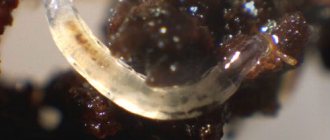Kinds
The disease comes in various types: chronic or acute, subacute, subchronic. This classification is based on the severity of the disease. Important. The chronic form is always a complication of the acute form.
According to the severity of symptoms, nephritis can be diffuse and focal . According to the anatomy of the lesion, the following types are distinguished:
- pyelonephritis (purulent damage to the renal pelvis);
- glomerulonephritis (kidney glomeruli and vessels are affected);
- shunt nephritis (the kidney structure is destroyed by antibodies that arise in the parenchyma);
- radiation nephritis (damage caused by internal or external radiation);
- hereditary nephritis (leads to kidney failure).
[custom_ads_shortcode2]
Forecast
If treated incorrectly or untimely, the prognosis can be fatal. The disease is quite serious, but well studied. Self-medication can lead to the acquisition of a chronic form of the disease.
Consequences
The acute form of the disease, if treated in a timely manner, does not affect life expectancy and has a good prognosis. The consequences of the disease can be: chronic nephritis, high blood pressure, intoxication up to coma.
Symptoms
The first symptoms of the disease are behavioral changes and lethargy. The pet stops playing, perhaps he will hide to lie down and not have contact with the owner or other household members. Apathy appears. Body temperature rises, the animal's skin becomes hot.
To understand the situation at home, you should always keep an electronic thermometer, which will allow you to immediately suspect health problems. It is not expensive and quickly measures the dog's body temperature. Then the symptoms begin to quickly worsen.
Vomiting and change in urine color appear. She's getting dark. The pet may take unusual positions or whine when urinating because it is in pain.
Asks to go to the toilet more often. The acute form is characterized by a decrease in the amount of urine, and the chronic form is characterized by an increase. When palpating the back and lower back, the animal becomes anxious due to pain.
Swelling of the eyelids, jaws, abdomen and thighs may occur. There is shortness of breath and cough.
Such kidney problems can lead to uremia. This is an animal condition that occurs due to toxic damage to the blood by nitrogenous and other body wastes that cannot be eliminated due to kidney problems. If you do not help the animal in this condition, then the prognosis is fatal. Next comes uremic coma.
[custom_ads_shortcode1]
Diagnostics and tests
To diagnose the disease, blood and urine tests will be taken from your pet, and an ultrasound may be performed. Rarely, a kidney x-ray with contrast and a biopsy are required. A blood test reveals an increase in white blood cells.
In the urine I find blood (erythrocytes), leukocytes, casts, epithelium and salts. The pH of urine shifts. In acute illness, protein is detected in the urine.
[custom_ads_shortcode2]
Neoplasms
The most common primary kidney tumors are adenocarcinomas and develop in dogs over 6 years of age. Nephroblastomas are detected in dogs up to one year old. Kidney malignancies tend to metastasize to the lungs.
Tumors located in other organs often metastasize to the kidneys.
Typically, kidney tumors are diagnosed in late stages, when there is a noticeable increase in the size of the affected kidney, or when there is noticeable blood in the urine.
In all cases of renal neoplasms, the prognosis ranges from guarded to unfavorable, and removal of the affected kidney as early as possible is usually indicated.
What to feed?
Most often, the first day of treatment is fasting. Only drinking is allowed. Next, the animal is fed a dietary diet, it should be low in protein.
Table salt is completely excluded. You can give broth, fermented milk products, cereals and vegetables.
[custom_ads_shortcode3]
What to do at home?
The first and most important rule is do not self-medicate. Pyelonephritis is a dangerous disease that can lead to serious complications. Only an experienced specialist in a veterinary clinic can determine its cause and prescribe effective treatment.
The therapy is prescribed by a specialist, and the pet owner organizes proper home care. Basic recommendations:
- Dietary food . Eliminate carbohydrates from your diet and add lean meats (eg chicken, beef) and vegetables. The amount of cereals and cereals must be reduced to 25% of the serving.
- Comfort . Provide your pet with comfort: choose bedding, prevent possible hypothermia;
- Observation . Do not forget to show a dog that has had pyelonephritis to a specialist at least 1-2 times every six months.
Your attentive attitude and professionalism of a veterinarian will help your pet overcome the disease and avoid complications.
Breed characteristics
Nephritis caused by poisoning is often found in stray dogs that feed on the street. Due to constant eating of spoiled food, the kidneys are gradually affected.
Small breeds are prone to inflammation due to the fact that they are more easily hypothermic in cold weather outside. A dog that is not free from parasites is also at risk. Regular entry into the blood of toxic substances from parasites weakens the body and kidneys.
The following breeds are considered predisposed to kidney disease:
- Doberman;
- Samoyed husky;
- malamute;
- Shitzu;
- poodle;
- Pekingese;
- Golden retriever;
- boxer;
- bulldog;
- chow-chow;
- Yorkshire Terrier;
- rottweiler
[custom_ads_shortcode1]
How the kidneys work
Plasma purification occurs according to the following scheme:
- Blood enters the organ through the renal artery and leaves the renal vein.
- Poisons are filtered in nephrons, which are presented in the form of a huge number of microscopic units. Each nephron has a complex structure in the form of glomeruli (clusters of capillaries) and a system of tubules, enclosed in a capsule that protects it from external influences.
- After processing, the sifted toxins enter the renal pelvis, then the ureter and bladder.
- When the level of fluid in the bladder reaches a certain volume, it sends a signal to the brain that it is time to empty itself.
- A toilet-trained pet begins to behave restlessly and asks to go outside.
Thus, the kidneys remove the end products of nitrogen metabolism from the body - urea, ammonia, uric acid, purine bases. They cleanse the body of foreign and toxic compounds (including removing medications), excess fluid, and excess inorganic and organic substances.
Pregnant and nursing
The symptoms of nephritis in a pregnant or lactating bitch are the same as in other affected dogs. In severe cases, the pregnancy may be terminated. In any case, the doctor will fight for the health and life of the bitch.
The condition of the puppies in the uterus and their heartbeat are monitored over time using an ultrasound. Anesthesia in this position is not desirable for the health of a pregnant dog. Treatment is carried out traditionally.
If the pet refuses to eat, then parenteral nutrition and IV drips are mandatory. If a nursing dog has kidney problems, it is possible to stop feeding puppies and switch to feeding babies with an artificial formula. The fact is that drugs that enter breast milk are dangerous for puppies.
[custom_ads_shortcode2]
Urolithiasis disease
Urolithiasis is the formation of stones or sand in the kidneys or bladder, which prevents the normal flow of urine.
Common reasons for the formation of sand and stones include improper feeding - namely, the predominance of proteins over carbohydrates, excess fish, and dairy products. In addition, urolithiasis can be caused by a genitourinary tract infection. It is also known that some dog breeds may be prone to this disease. This is associated with a genetic disorder of phosphorus-calcium metabolism.
The pathology is characterized by the accumulation of calculi or stones in the bladder and renal pelvis. Essentially, stones are calcium or phosphorus salts that accumulate and prevent urine from being excreted normally. If too many of them form, blockage of the urinary ducts can occur. Without urgent surgical treatment, this condition can lead to the death of the animal.
The disease manifests itself symptomatically:
- pain when urinating;
- lethargy;
- refusal to eat;
- frequent or difficult urination.
The dog should be taken to the veterinarian as soon as possible. He will prescribe antispasmodics, special nutrition that excludes large amounts of calcium and phosphorus salts. Diet is an important component of therapy.
For prevention, you need to create the correct diet for feeding your dog, taking into account the characteristics of the breed. It is also necessary to prevent infections of the genitourinary system.
Symptoms of nephritis in dogs
- At the beginning of the development of nephritis, the dog’s appetite decreases, an increase in body temperature and depression are observed.
- due to sore kidneys, the animal often takes an unnatural position, arching its back. And if you press on his kidney area or lumbar region, he will show concern.
- The dog develops swelling of the intermaxillary space, abdomen, eyelids, thighs, dyspepsia, and vomiting.
- mucous membranes turn pale or blue, and thirst often increases.
- shortness of breath from the respiratory system, sometimes a slight cough or congestive moist wheezing, may occur.
- Due to the presence of blood overflow of the pulmonary system and fever, bronchopneumonia and bronchitis are detected.
- At the very first signs of the disease, a frequent urge to urinate initially appears.
- The dog quickly develops anuria or oliguria.
- the urine becomes cloudy, usually of high density, from light red to brown.
Analysis shows that the urine contains a lot of leukocytes, red blood cells, casts, tubular epithelium and salts. The pH of the urine also changes. Acute nephritis is characterized by short-term excretion of large amounts of protein in the urine.
In this case, the blood is thinned because it contains a lot of water, and the density of the blood serum is reduced. The animal is diagnosed based on laboratory urine analysis and clinical examination data.
[custom_ads_shortcode1]
Balanoposthitis
Balanoposthitis is inflammation of the prepuce and glans penis at the same time. It is characterized by pain and redness, discharge of pus, and less often blood. Occurs when urine and sperm accumulate in the preputial sac. The development of the disease is also possible if phimosis is present - narrowing of the foreskin and, as a consequence of the accumulation of secretions, also leading to inflammation.
Treatment boils down to washing the prepuce with potassium permanganate (a weak solution) or chlorhexidine. Then the introduction of syntomycin ointment or levomekol. In severe cases, antibiotics are prescribed. Treatment lasts 2-3 weeks.
Prevention - regular examination by a veterinarian, preventive washing of the prepuce.
Treatment of nephritis in dogs
Depending on the degree of kidney damage, acute nephritis can last from one to two weeks and end either in recovery or (in cases of uremia) in the death of the animal. If the disease drags on and becomes chronic, it can last not only for months, but also for years.
An animal with symptoms of nephritis should be suspected of having an infectious disease and therefore should be isolated and treated comprehensively. It is also urgent to eliminate the causes of the disease (for example, cold factors). During the first day of exacerbation of the disease, a starvation diet is recommended, and after that a limited amount of easily digestible food, low in protein, is prescribed.
These can be porridges from various cereals and vegetables, low-fat lactic acid products, vegetable soups and lean meat broths, infusions and decoctions of medicinal herbs.
- In case of acute nephritis, a course of treatment with antibiotics
(furadonin with erythromycin or streptomycin) is necessary. - In parallel with them, sedatives, diuretics (aminophylline), and cardiac drugs (caffeine, cardiomine) are used.
- It is necessary to administer intravenously a 0.5% solution of novocaine with ascorbic acid and a 10% solution of calcium chloride.
In order to prevent the disease, it is necessary to promptly eliminate the causes that caused the exacerbation of nephritis. Do not allow toxic substances to enter the animal’s body (with medicines or food), avoid hypothermia. Did you like it? Share with your friends!
Give it a like! Write comments! Your vote will be first.
Problems with the urinary system are quite common in veterinary practice. The “canonical” example is nephritis in dogs. In these animals, this pathology occurs quite often and brings many problems both to the dogs themselves and to their owners. Now we will talk about what it is and how this “something” can be cured.
Scientifically speaking, this is the name for inflammation of the renal parenchyma, which mainly affects the renal glomeruli, the network of blood vessels and the pelvis. Without going into anatomical details, we can safely say that the inflammatory process in this case spreads throughout the most important parts of the organ. All this leads to quite serious consequences.
What causes the disease? There are many reasons, each of which may well lead to such an unfavorable outcome. Firstly, the most banal hypothermia. Of course, some Caucasian Shepherd dog is unlikely to catch a cold while walking, but a dwarf Chihuahua taken out into the yard on a chilly autumn evening without a warm cape... In a word, such a possibility still cannot be ruled out. But it must be said that a much more common cause of nephritis in an animal is the activity of pathogenic microflora or parasites. Thus, leptospirosis, which is quite common in dogs, almost always leads to inflammatory processes in the kidneys. Plague, infectious hepatitis and enteritis - all these diseases also often precede kidney nephritis in dogs.
Classification
Firstly, the disease is divided according to its course: acute nephritis in dogs, subacute, chronic, subchronic (when periods of exacerbation and improvement are extended). Veterinarians count as many as six types of this pathology:
- Glomerulonephritis, which is characterized by damage to the renal glomeruli, as well as the vascular network.
- A rare occurrence of shunt nephritis, which is a severe autoimmune disease: with this pathology, entire complexes of antibodies are formed around the vascular glomeruli in the parenchyma of the organ, which destroy the structure of the kidney.
- Interstitial nephritis in dogs, characterized by inflammation of the tubules.
- Pyelonephritis is a purulent lesion of the renal pelvis.
- Radiation, characterized by predominant inflammation of the renal tubules.
- Hereditary nephritis. It is assumed that their appearance is due to some genetic defects.
As a rule, the onset of the disease is marked by a sharp, sudden increase in body temperature significantly above normal. Signs of severe intoxication of the whole body quickly increase, which manifests itself in frequent vomiting, and paralysis of the pelvic limbs is often recorded. But all these symptoms are not very specific and indicative. The main symptom is urine. No, not the very fact of its presence, but the state of the discharge. In dogs with nephritis, the urine becomes cloudy and often contains pus and blood, visible to the naked eye. Since the act of urination most often becomes very painful, the dog tries to take extremely unusual positions, whines or growls dully.
Vaginitis
Bitches may develop a pathology such as vaginitis. This is an inflammation of the vaginal mucosa. It is caused by fungi or bacteria. The causes of inflammation are mainly considered to be a decrease in the body's resistance and vaginal trauma.
The disease is characterized by increased discharge from the vulva. The dog often licks it. The discharge may be colorless or yellowish.
Treatment is mainly local. These are ointments and antimicrobial liniments, solutions. Washing the vagina with an antiseptic.
Prevention comes down to avoiding injuries, stress, good nutrition and maintenance.











